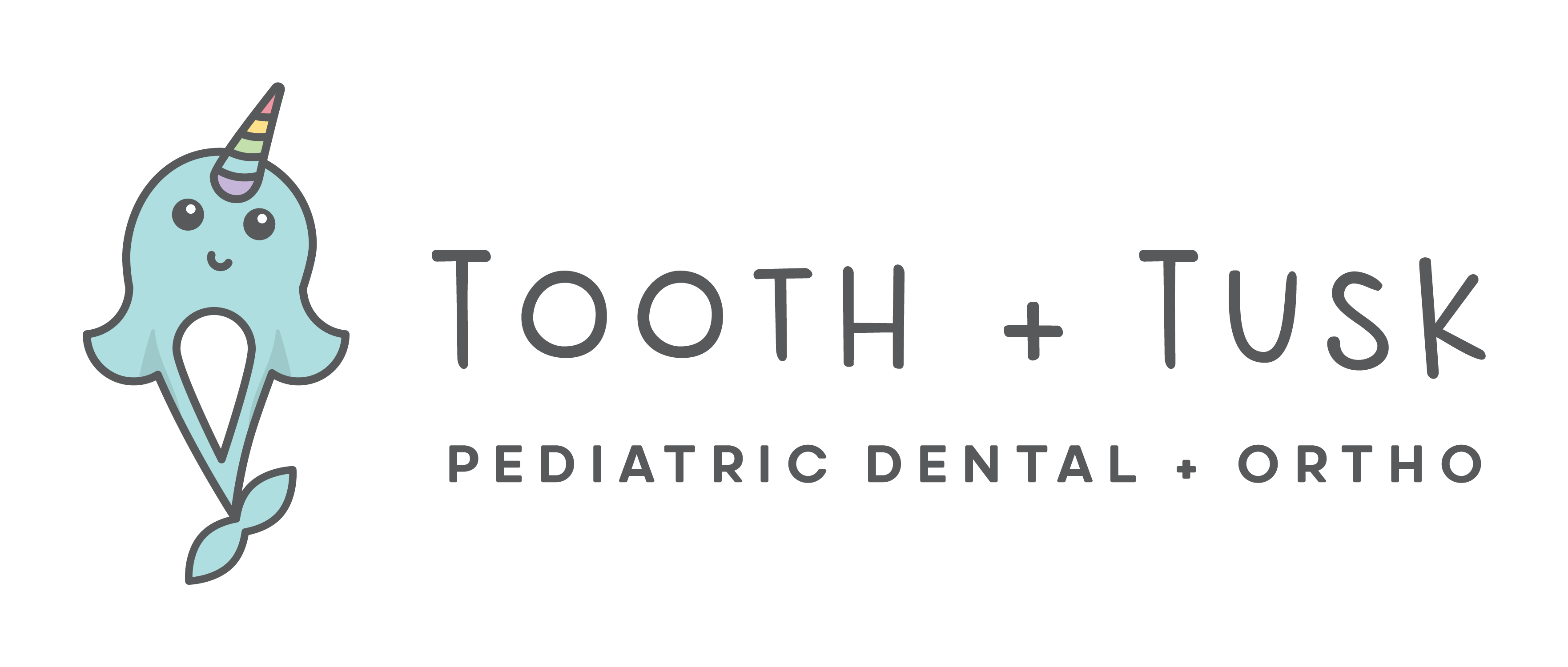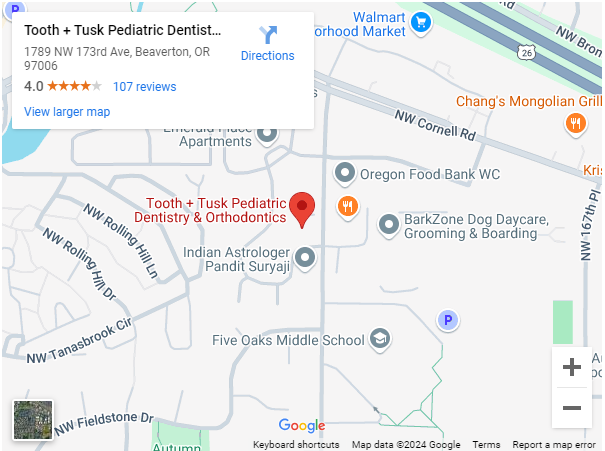
As pediatric dentists, we are dedicated to helping your child achieve and maintain great oral health. This includes empowering caregivers and parents with the proper education and guidance to take care of their child’s teeth.
Primary Tooth Eruption
Tooth eruption refers to the process during tooth development where the teeth emerge through the gums and become visible. Humans have two sets of teeth: their primary teeth and their permanent teeth.
Primary teeth also known as baby or deciduous teeth are the first set to arrive. These teeth are noticeably smaller and whiter than permanent, or adult teeth. Infants are born with 20 primary teeth within their gums and may begin to erupt as early as 4 months after birth. Generally, the central teeth of both the upper and lower jaw are the first to appear with the remainder of teeth erupting sequentially in pairs moving to the back of the mouth. By the age of 3, most children will have a full set of primary teeth.
We encourage parents and caregivers to schedule their child’s first dental appointment after the first tooth arrives so we can begin monitoring growth and setting the foundation for great oral health.
Symptoms of Teething
During this time, your child may have sore or tender gums as their teeth begin to erupt. Common signs of teething include:
- Difficulty sleeping
- Drooling more than usual
- Crying
- Fussy behavior
- Loss of appetite
To alleviate this discomfort, use a clean finger, cool spoon, or cold wet cloth to rub the gums gently. Teething rings can also help to relieve any discomfort of teething. Do not give your child medication to help with teething pain unless directed to by their doctor or dentist.
Care and Management
Although they are “baby” teeth, primary teeth play an important part in your child’s growth and development even beyond their oral health. Primary teeth help to facilitate speech production, proper jaw development, good chewing habits, and the proper spacing and alignment of permanent teeth.
After each feeding, be sure to wipe your child’s gums down with a wet washcloth or gauze pad. As their teeth begin to erupt, you can begin to help them care for their teeth by brushing and flossing properly to avoid tooth decay, cavities, and childhood periodontal disease. Use an ADA approved child toothpaste and an appropriately sized brush to help clean your child’s teeth.
The Eruption of Permanent Teeth
By the time your child is 6 or 7, they may feel their primary teeth beginning to loosen as their permanent teeth begin to erupt. The incisors or front teeth are usually the first to fall out, and generally, the rest follow in the order they erupted. This process will continue until the age of 21. Most adults have 28 permanent teeth or 32 if they keep their third molars (also known as wisdom teeth).
The early years of tooth development and care help to set a solid foundation for your child’s oral health. By establishing good habits and educating them as they grow older on proper brushing and flossing techniques, you can ensure the health of their future smile. For more information on tooth eruption and how we can help, contact Tooth + Tusk Pediatric Dentistry today.

